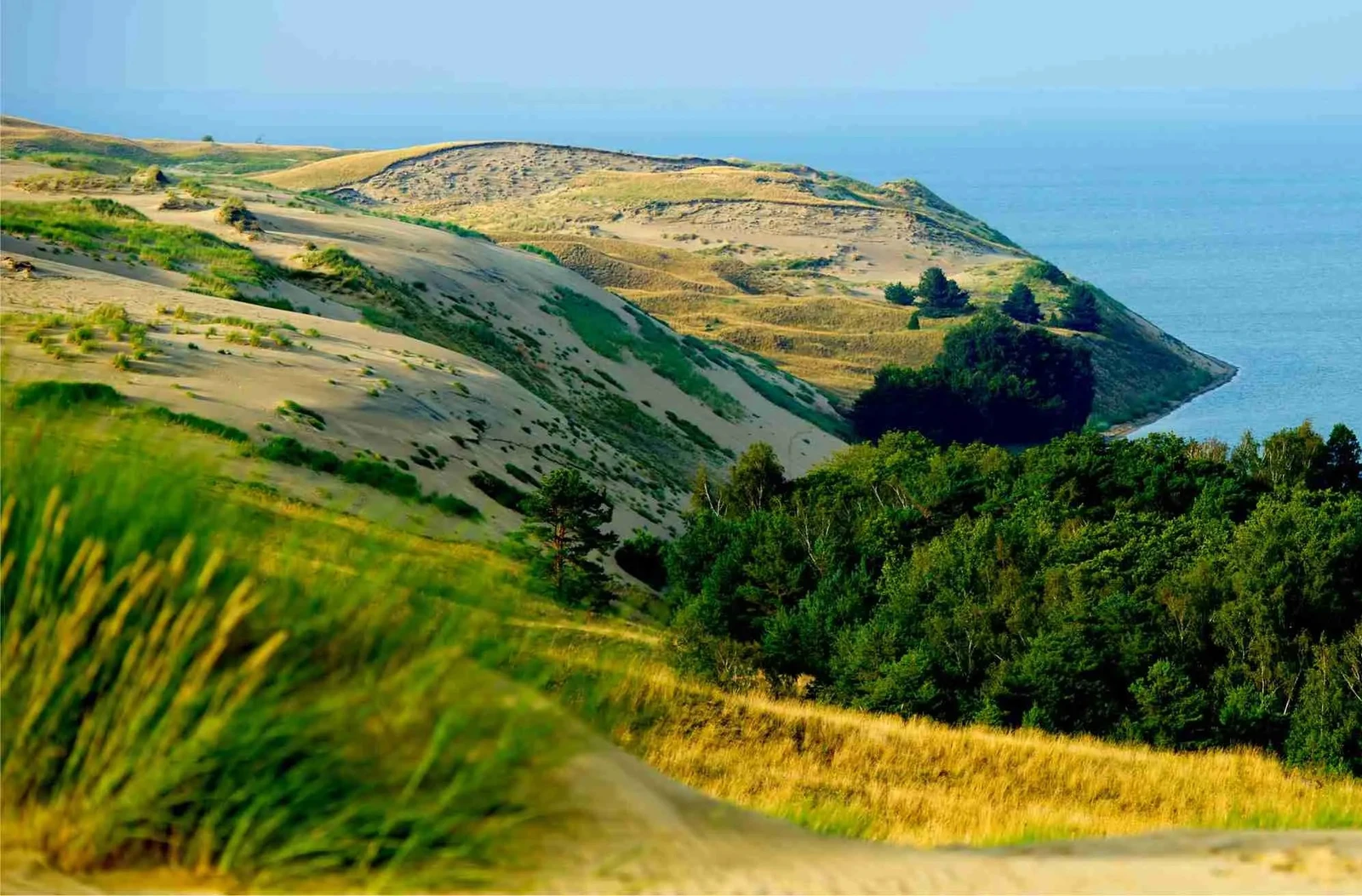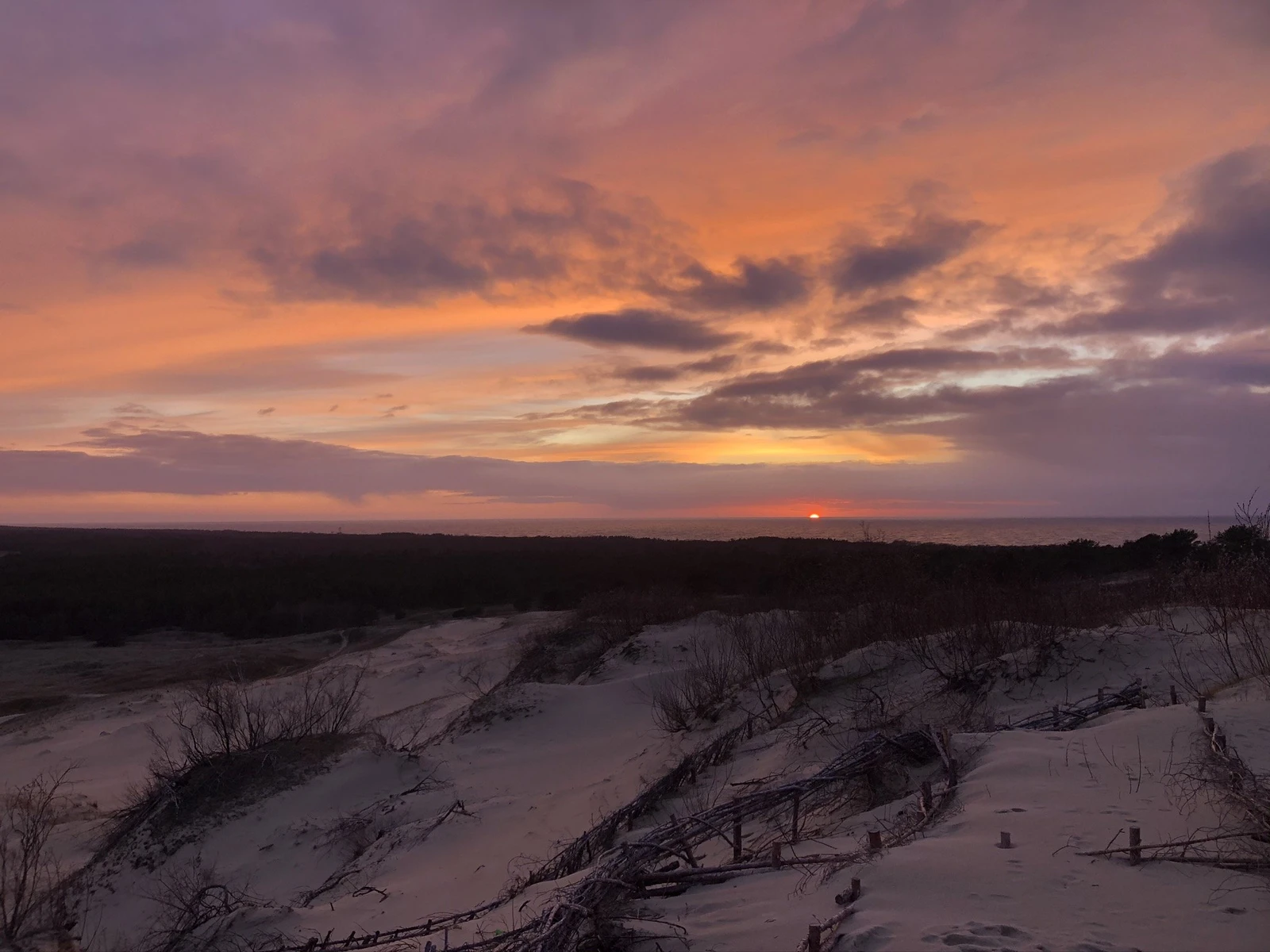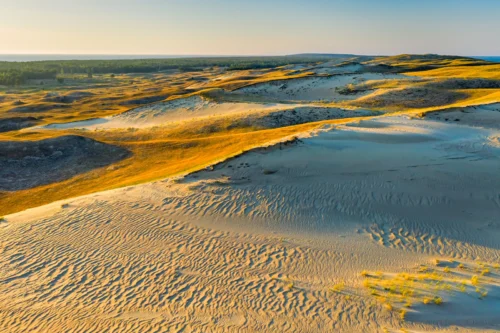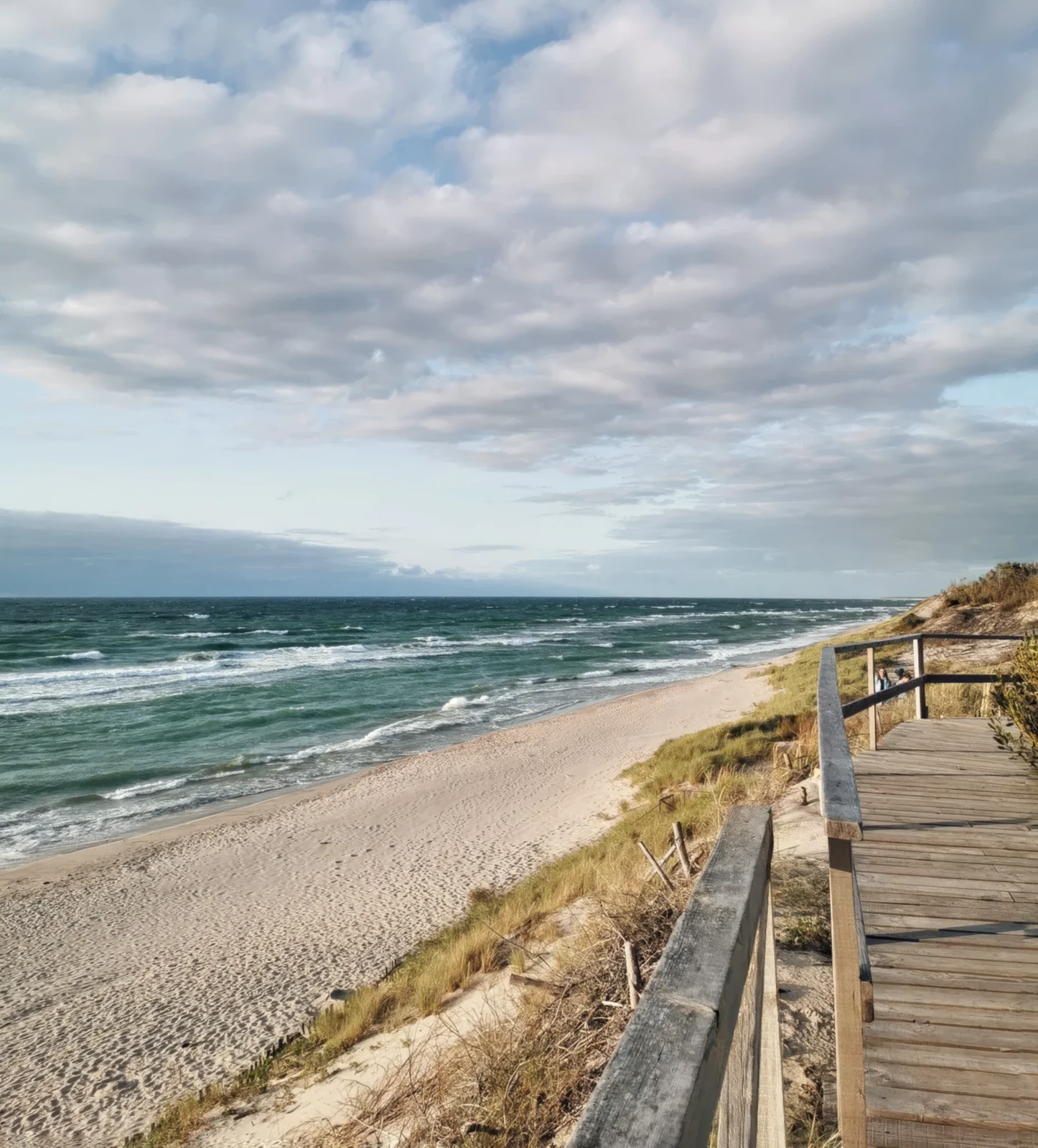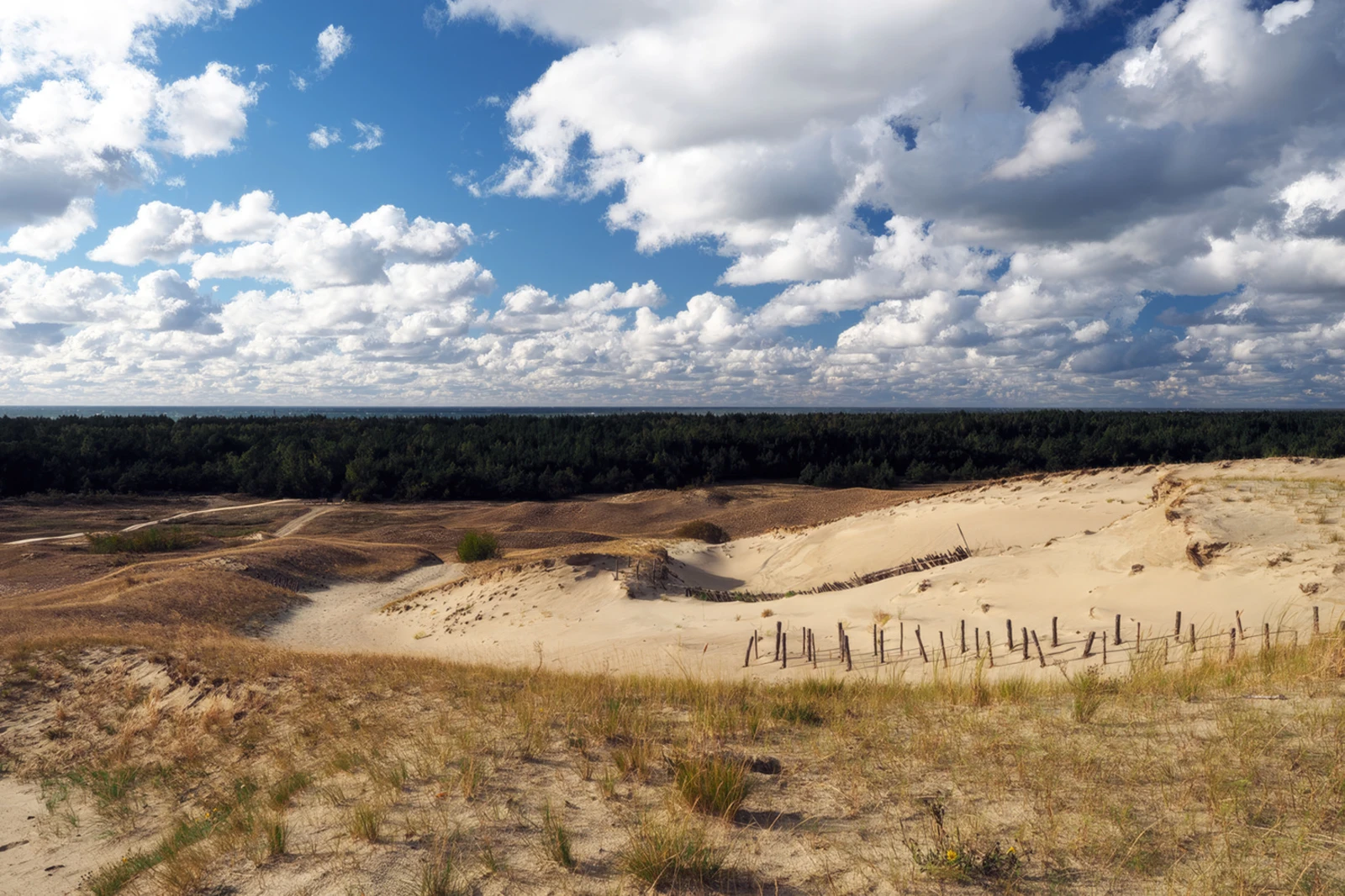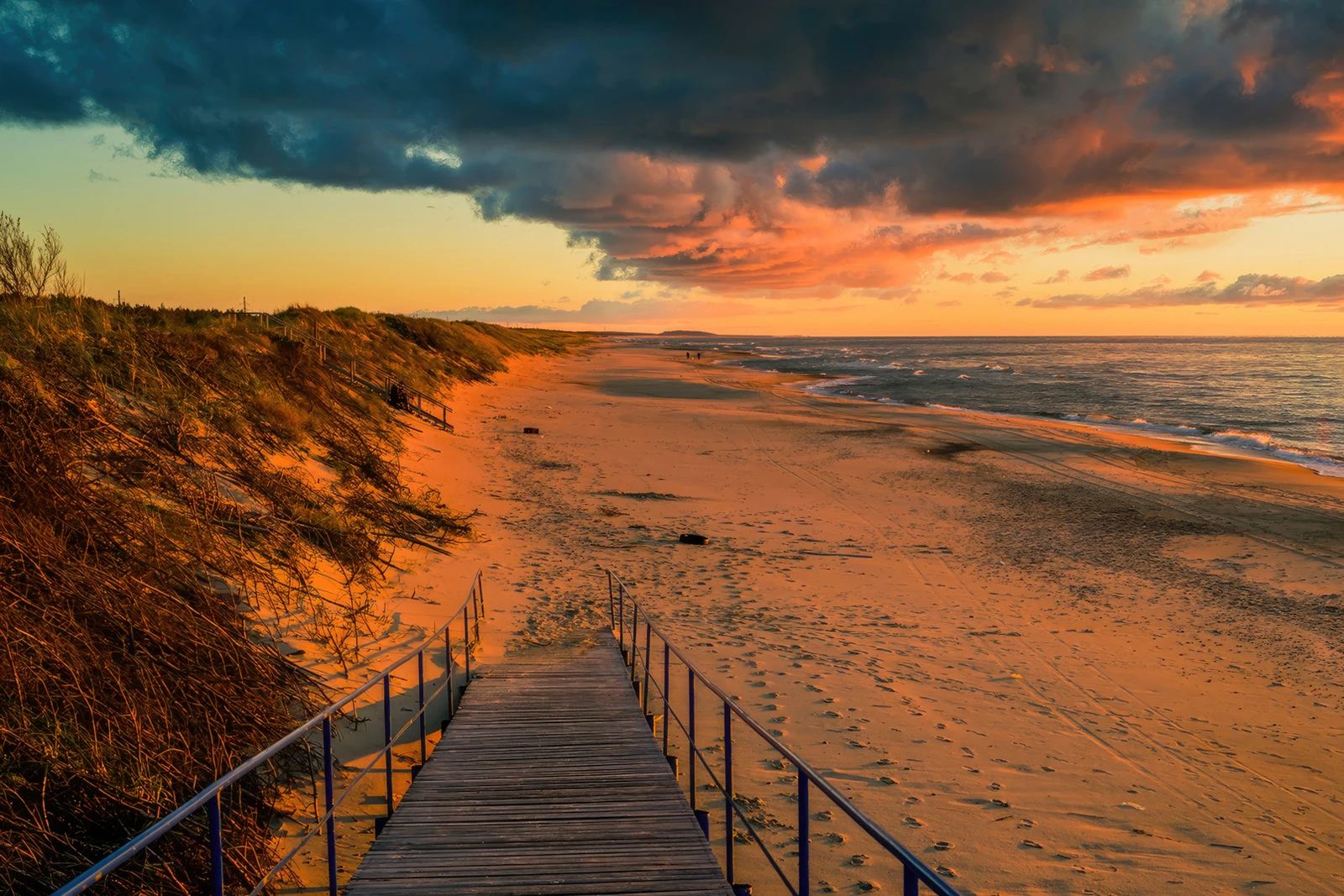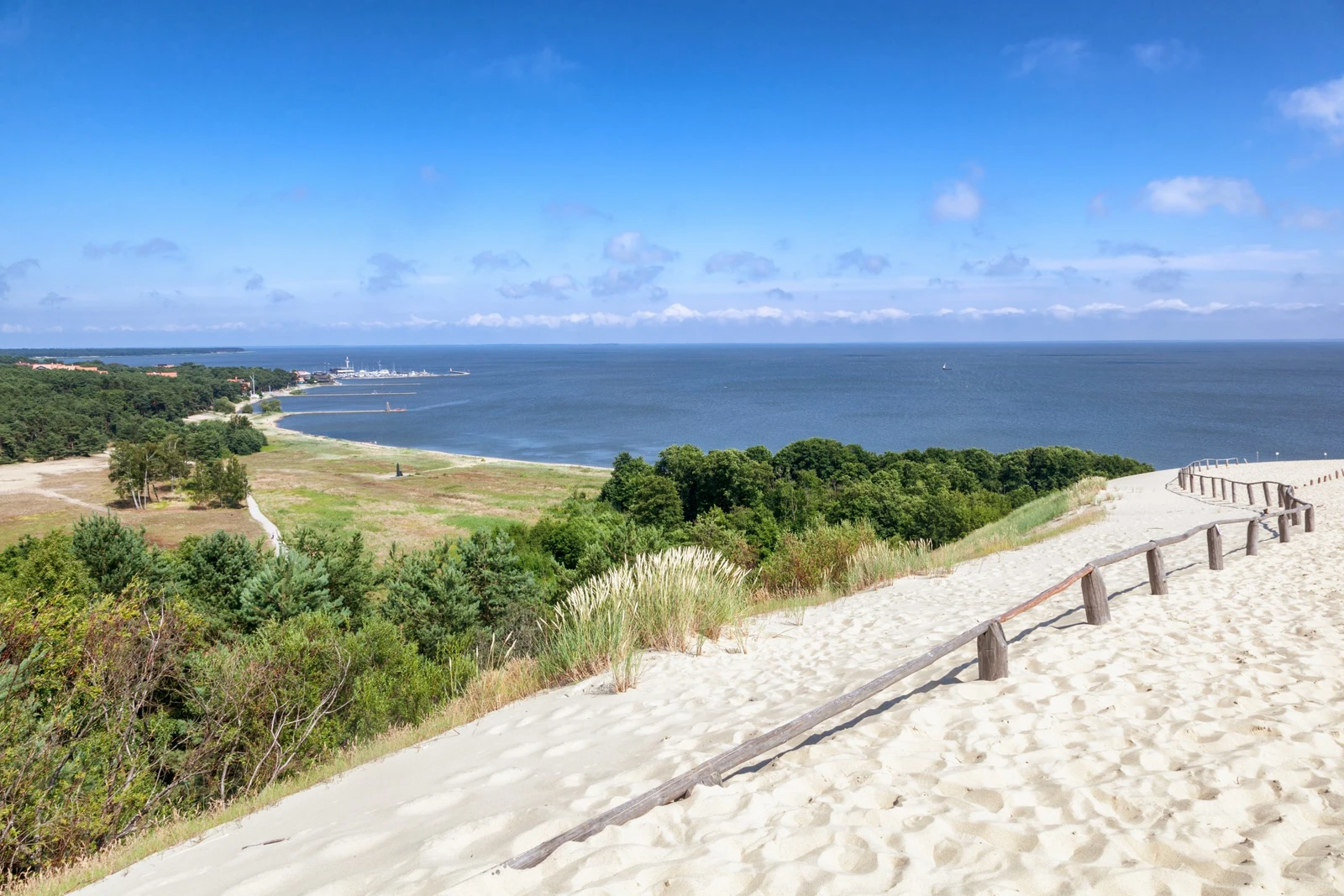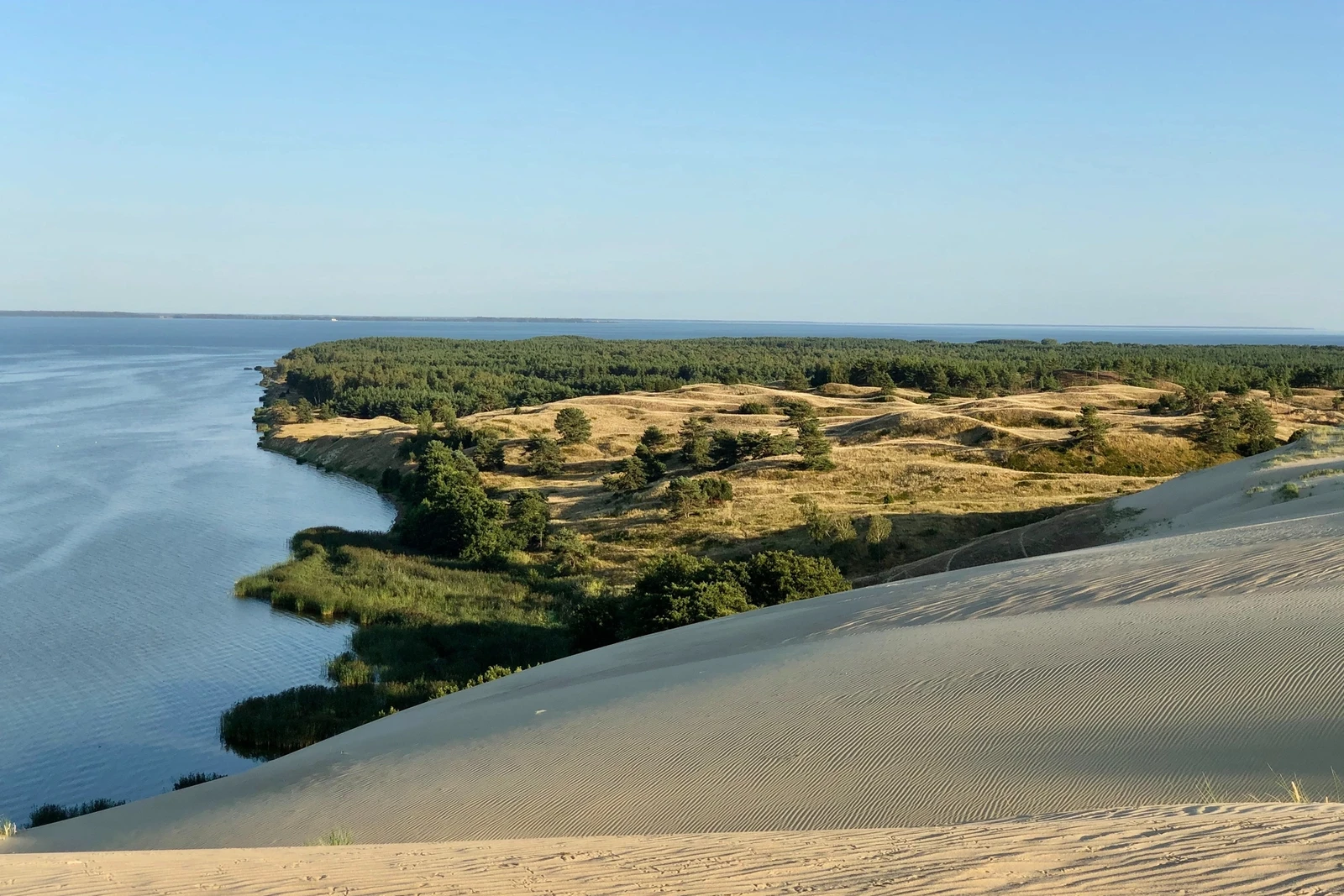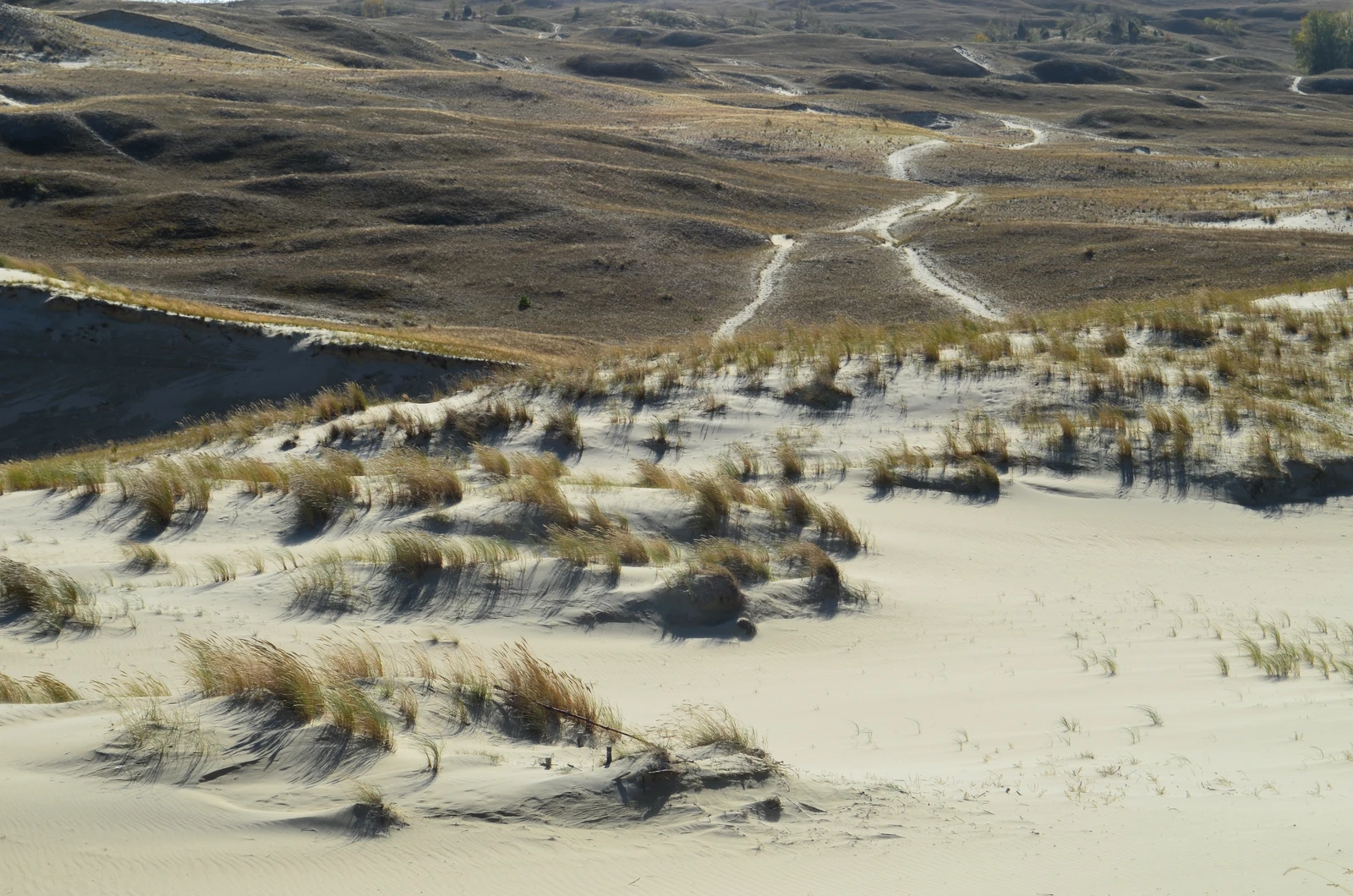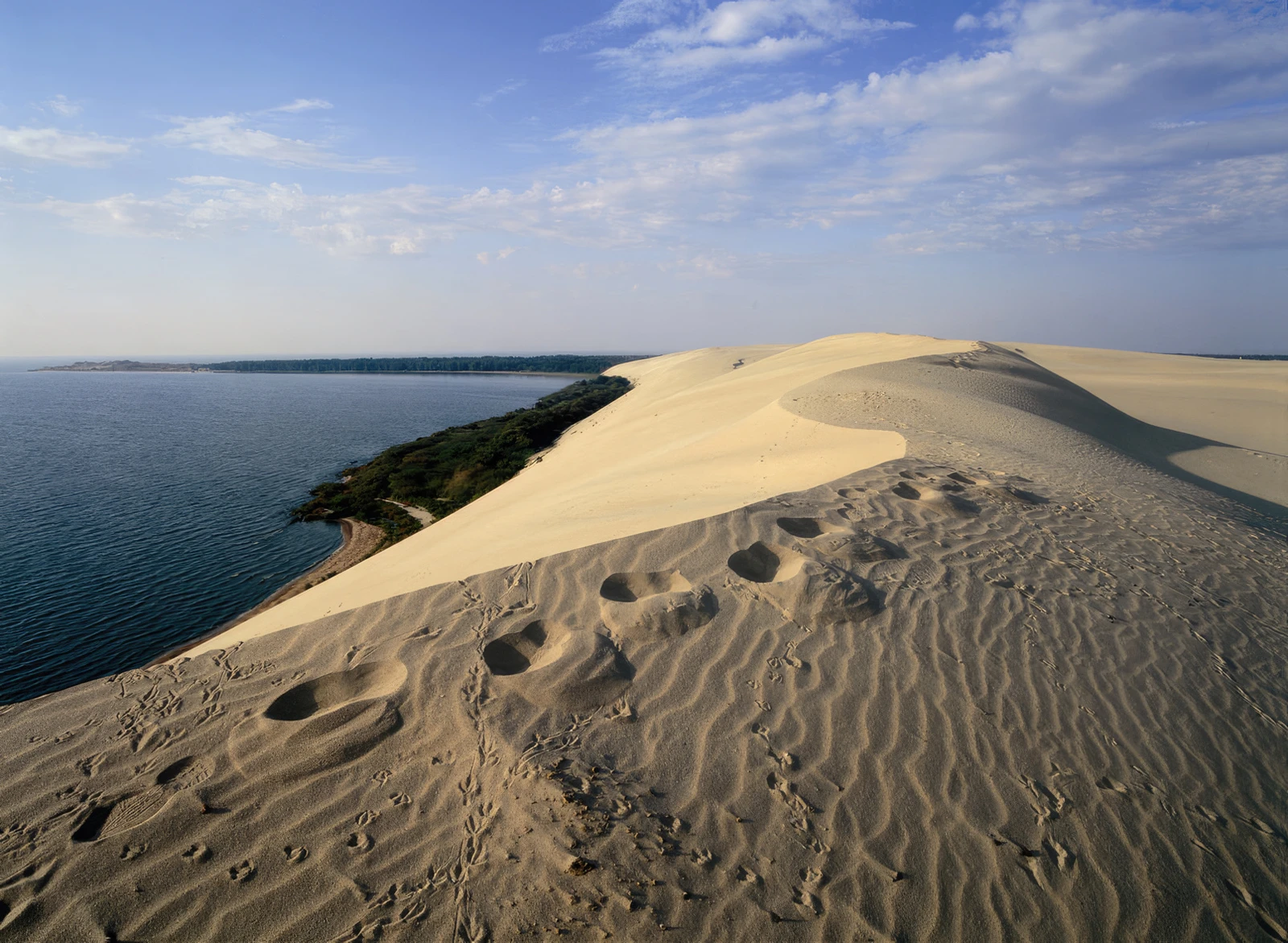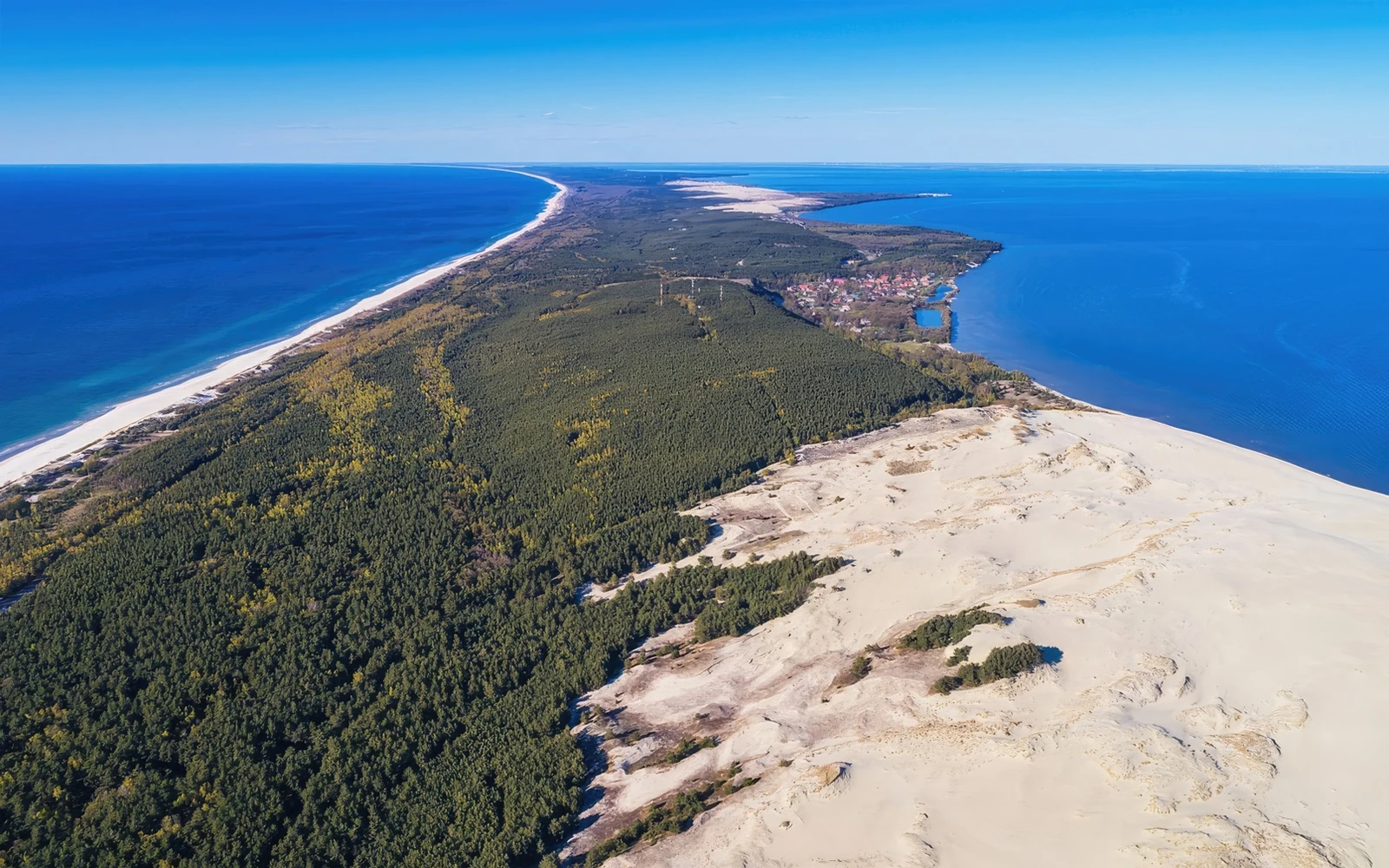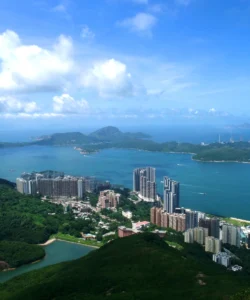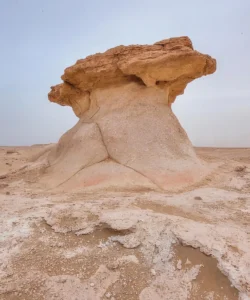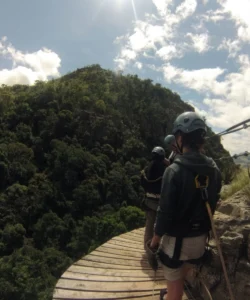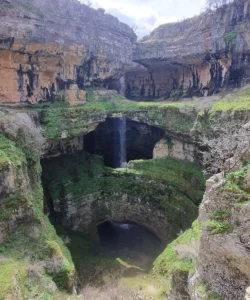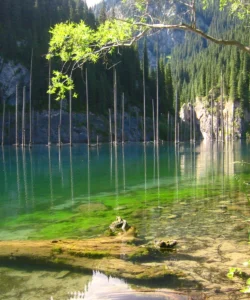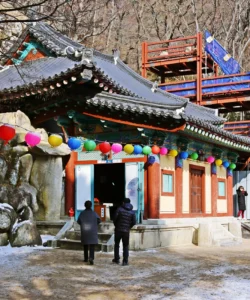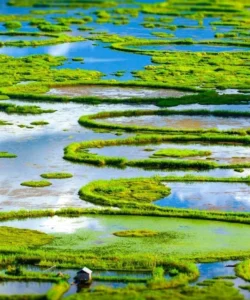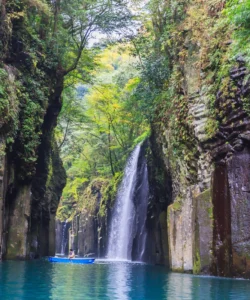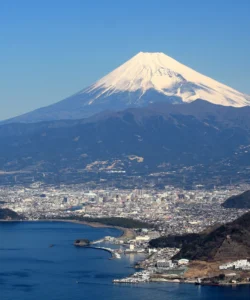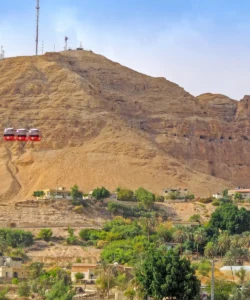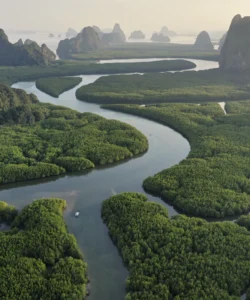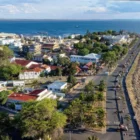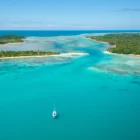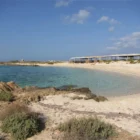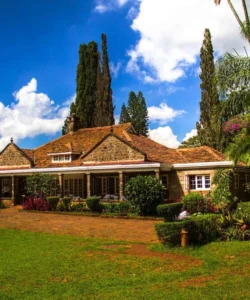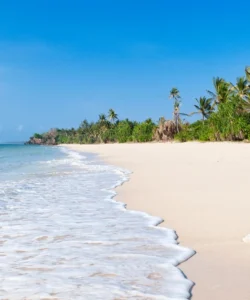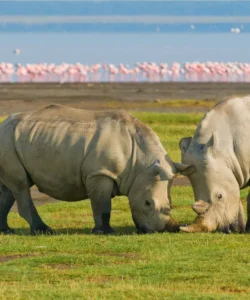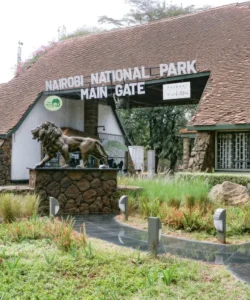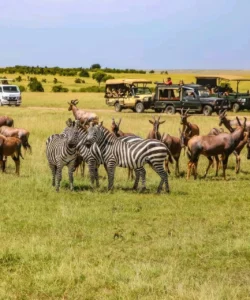The Curonian Spit (Kuršių nerija in Lithuanian, Kurshskaya Kosa in Russian) is an extraordinary and fragile natural wonder, an elongated, thin, curved sand-dune peninsula that stretches for 98 kilometers (61 miles) along the Baltic Sea coast. Shared between Lithuania (the northern 52 km) and Russia (the southern 46 km, part of Kaliningrad Oblast), it is a unique, vulnerable, and dynamic landscape that beautifully illustrates the constant interplay between natural forces (wind, waves, sand) and ceaseless human efforts to preserve it. Designated a UNESCO World Heritage site in 2000, it is affectionately known by locals as the “Pearl of the Baltic Sea” or “Lithuanian Sahara.”
Listen to an introduction about Curonian Spit

Name: Curonian Spit (Kuršių nerija / Ку́ршская коса́)
Address: The Lithuanian part is primarily administered by the Neringa municipality. The main towns in the Lithuanian section are Nida (the largest settlement), Juodkrantė, Preila, and Pervalka.
How to get there:
Reaching the Curonian Spit, involves a significant international journey to Europe, followed by domestic travel within Lithuania and a ferry crossing:
- From Vilnius to Klaipėda:
- By Train: Take a train from Vilnius Railway Station to Klaipėda. The journey takes approximately 4-4.5 hours and is scenic.
- By Bus: Buses depart frequently from Vilnius Bus Station to Klaipėda. The journey takes around 4-5 hours.
- By Car/Taxi: Driving from Vilnius to Klaipėda takes about 3-4 hours.
- From Klaipėda to the Curonian Spit:
- By Ferry: This is the only way to access the Lithuanian part of the Curonian Spit. Ferries depart frequently from two terminals in Klaipėda:
- Old Ferry Terminal: For foot passengers and cyclists, arriving in Smiltynė (northern tip of the Spit).
- New Ferry Terminal: For vehicles and passengers, also arriving in Smiltynė.
The ferry ride is short, only about 5-10 minutes.
- By Ferry: This is the only way to access the Lithuanian part of the Curonian Spit. Ferries depart frequently from two terminals in Klaipėda:
- Within the Curonian Spit:
- Once in Smiltynė, a well-developed cycle path extends south through the entire Lithuanian side of the Spit to Nida, making cycling a very popular way to explore.
- Local buses also connect Smiltynė to the villages of Juodkrantė, Preila, Pervalka, and Nida.
- Cars are allowed on the Spit (via the vehicle ferry), but parking is regulated, and environmentally conscious travel (cycling, bus) is encouraged.
Best Time to Visit:
The Curonian Spit is beautiful year-round, but the best time depends on your interests:
- Summer (June to August): Warmest weather, ideal for swimming, sunbathing on the Baltic beaches, cycling, and enjoying the lively atmosphere in Nida and Juodkrantė. This is peak tourist season, so it can be crowded.
- Late Spring (May) and Early Autumn (September): Pleasant temperatures, fewer crowds, excellent for hiking and cycling, and beautiful natural colors.
- Winter (November to April): Cold and often snowy, offering a serene, stark, and very quiet landscape. Unique for experiencing the frozen Curonian Lagoon. Many tourist services might be reduced.
Landscape and Architecture:
The Curonian Spit’s “architecture” is a captivating blend of vast natural sand dunes, resilient forests, and charming human settlements, shaped by centuries of human-nature interaction:
- High Sand Dunes: The most iconic feature. The Spit is home to some of Europe’s highest moving (drifting) sand dunes, particularly the Great Dune Ridge along the Curonian Lagoon side. Dunes like Parnidis Dune (52 meters / 171 feet high, with a sundial at its summit) and Vecekrug Dune (67.2 meters / 220 feet high) offer stunning panoramic views of both the Baltic Sea and the Curonian Lagoon. These dunes are still actively shaped by wind.
- Dune Stabilization Works: A unique architectural and landscape feature is the extensive system of human-engineered protective dune ridges along the Baltic Sea side, reinforced with pine forests, brushwood hedges, and sometimes grid-like structures (straw fences) to prevent the inland migration of sand that once buried entire villages. This ongoing battle between human intervention and natural forces is central to the Spit’s identity.
- Dense Pine and Birch Forests: A significant portion (over 70%) of the Spit is covered by dense forests, primarily planted pines and birches. These forests play a crucial role in stabilizing the dunes and provide beautiful walking and cycling trails. The “Dancing Forest” (on the Russian side, but a similar phenomenon can be seen in parts of the Lithuanian side) with its unusually twisted trees is a natural curiosity.
- Baltic Sea Beaches: Along the western side, pristine, wide golden sandy beaches stretch for kilometers, perfect for swimming, sunbathing, and long walks.
- Curonian Lagoon: The calm, shallow waters of the Curonian Lagoon on the eastern side offer a stark contrast to the open Baltic Sea, and are popular for fishing and quieter water activities.
- Traditional Fishing Villages (Nida, Juodkrantė, Preila, Pervalka): The settlements on the Spit are unique for their traditional architecture and layout:
- Colorful Wooden Houses: Many houses are built in traditional forms, often with brightly painted wooden facades and distinctive ethnographic weather vanes (Curonian pennants) atop tall poles, symbolizing the owner’s status and livelihood.
- Linear Plan: Villages often have a linear plan, with a single main street running parallel to the Lagoon.
- Ethnographic Fisherman’s Museum (Nida): Preserves the traditional life of the local fishermen.
- Hill of Witches (Juodkrantė): An open-air sculpture park featuring over 80 intricate wooden sculptures of witches, devils, and mythical creatures from Lithuanian folklore, set along a path in a pine forest, blending art with nature.
- Thomas Mann House (Nida): The summer house of Nobel Prize-winning German writer Thomas Mann, now a cultural center and museum, reflecting the Spit’s history as an artists’ colony.
- Lighthouses: Traditional lighthouses (like Nida Lighthouse and Pervalka Lighthouse), although rebuilt after WWII, are important navigational and historical landmarks.
What makes it famous:
The Curonian Spit is famous for:
- UNESCO World Heritage Site: Recognized for its outstanding universal value as a cultural landscape, an exceptional example of a landscape of sand dunes under constant threat from natural forces, whose survival is due to ceaseless human efforts to combat erosion.
- World’s Highest Moving Sand Dunes: It boasts some of the highest actively drifting sand dunes in Europe, offering unique geological formations and panoramic views.
- Paradoxical Landscape: The combination of vast desert-like sand dunes with dense forests, pristine beaches, and a calm freshwater lagoon creates a striking and unique natural paradox.
- Human-Nature Coexistence: It’s a powerful symbol of how humans have both threatened and successfully fought to preserve a fragile natural environment, demonstrating resilience and adaptation.
- Artistic and Cultural Inspiration: It has attracted and inspired numerous artists, writers (like Thomas Mann), and intellectuals, leading to a rich cultural heritage reflected in its museums, art colonies, and folklore.
- Unique Local Culture: The distinct culture of the Curonians and the preserved traditional fishing villages with their colorful wooden houses and unique weather vanes add to its charm.
- Biodiversity: Despite its seemingly harsh environment, it’s home to diverse flora and fauna, including rare plant species and a vital migratory bird flyway.
- Cycling Paradise: An extensive network of well-maintained cycle paths makes it a premier destination for cycling enthusiasts.
Differences from some other wonders:
The Curonian Spit distinguishes itself from other deserts, coastal areas, or cultural landscapes in several key ways:
- “Wet Desert” Dynamic with Human Intervention: Unlike true deserts (e.g., Sahara, Gobi) or purely natural coastal formations, the Curonian Spit is a pseudo-desert where high sand dunes coexist with forests and freshwater lagoons, maintained by continuous human intervention against natural erosive forces. This active, ongoing human-nature dynamic is its most significant differentiator.
- Dual Border Landscape: Its unique status as a transboundary UNESCO site, shared between Lithuania and Russia, gives it a distinct geopolitical and cultural complexity not found in most other natural or cultural wonders.
- Elongated, Narrow Shape: Its specific extremely long and thin strip of land (nearly 100 km long but often less than 1 km wide) creates a unique geographical phenomenon – a “dune wall” separating two vastly different water bodies (Baltic Sea and Curonian Lagoon).
- Cultural Preservation within a Dynamic Natural System: It’s not just about natural beauty; it’s about the survival and adaptation of a distinct human culture (fishermen, Karaites) that has lived for centuries on this fragile, ever-shifting land, marked by unique village architecture, folklore, and traditions (like the krikštai grave markers).
- Artistic Legacy as a Defining Feature: The strong historical presence of artists’ colonies (e.g., Nida’s Expressionist colony) and its continued inspiration for creative works set it apart, making its artistic heritage as notable as its natural beauty.
- Lack of Massive Single Structures: Unlike wonders with colossal human-made structures (e.g., Great Wall, Pyramids) or dominant natural monoliths (e.g., Sigiriya, Sugarloaf), the Curonian Spit’s “wonder” lies in its vast, dynamic, yet fragile landscape itself and the subtle, continuous human efforts to shape and maintain it.
In essence, the Curonian Spit is an extraordinary and poetic wonder, a living canvas of shifting sands, resilient forests, and enduring human spirit, offering a captivating journey through a unique landscape that tells a profound story of nature’s power and humanity’s tenacious will to survive and create.
